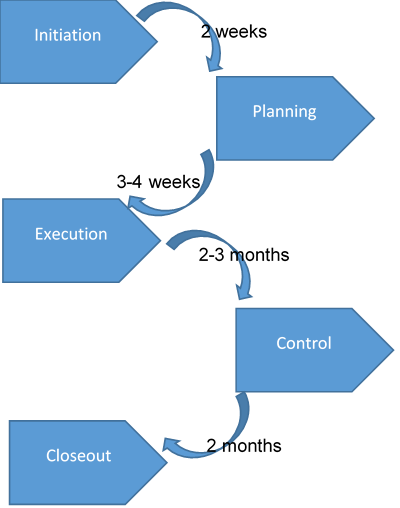Introduction
At present, safe and cheap payment systems have become a primary concern of many companies because online purchases are gaining more and more popularity. In the case of Google Corporation, the shopping service is among those which need improvement. Customers complain of its low efficiency. One of the possible advances in this respect can be the implementation of blockchain technology which can reduce the cost of transactions, simplify the record-keeping, and provide data privacy (Nair & Sebastian, 2017). Bitcoin is one of the famous blockchain projects which is a transparent and accountable crypto-currency. However, blockchain has some more possible applications (Jstevenperry, 2017)
Implementation Plan
Implementation of any technology should start with the careful analysis of existing problems and the ways the technology can be helpful to improve the situation. Thus, the implementation plan of blockchain technology for Google should consider the following aspects.
Work Breakdown Structure
The most general breakdown structure includes five stages, as it is shown in Figure 1.

As it is shown in Table 1, every stage consists of elements that should be completed. They need to be carefully planned and be implemented in a logical order.
Table 1. Elements of Work Breakdown Structure.
PERT and Project Scheduling
Program Evaluation Review Technique is a useful tool for scheduling, organizing, and coordinating tasks of a certain project. It presents the stages of the project, their order, duration, and interconnection. The PERT in Figure 2 can be suggested for blockchain technology implementation.

In case some problems are detected during the execution and control stages, the review of the initial plan can be needed, which will extend the schedule limits.
Stakeholders’ Considerations
With the implementation of a project based on blockchain technology, it is necessary to consider some of its key aspects. First of all, stakeholders should keep in mind that at present, there are no effective evaluation indices or criteria for evaluating blockchain technology and comparing it with similar systems or those fulfilling the same functions (Ministry of Economy, Trade, and Industry, 2017). Another issue to consider is that since the technology is new and promising, its emergence caused “a gold rush” (Deloitte, 2016, p.19). Thus, companies tend to implement it without evaluation of benefits and drawbacks in every individual case with some unreasonable hopes, which can lead to dissatisfaction with the results.
Impact on Employees
The implemented technology is mainly aimed at customers. Thus, it will not affect employees much. It will only touch the people involved in the planning of the project, its execution, and control. The employees involved will be some managers in charge of the project, the financial department, which will be responsible for the budget, and a project team which will include hardware and software professionals together with others necessary for the careful consideration of all project stages.
Operational Concerns
The implementation of blockchain technology can influence some aspects of the company’s operation. First of all, it can attract more customers to Google shopping services and thus increase the efficiency of this service. However, there is a short-term challenge to consider. Since blockchain technology is not so widespread, some customers may not trust it in the beginning. Nevertheless, after the system proves its reliability and safety, it is going to become a benefit. A primary concern of the company’s management will probably be selecting a project team and planning the project implementation.
Careful consideration of possible hidden pitfalls is crucial to avoid future problems in other stages. Moreover, the economic drawbacks of the technology should be considered, such as redundancy, scaling, regulatory compliance, irreversibility, and security (Ammous, 2016). Also, it is important to evaluate external regulatory, data ownership, and residency requirements regarding blockchain technology implementation (Mercator Advisory Group, 2016). The considerations of technical stuff include providing the hardware necessary for the adequate functioning of new technology. Team members responsible for software should take care of both functionality and a comfortable interface. The customers should consider trying a new initiative and provide feedback, either positive or negative, to stimulate the improvement of the project.
Conclusions
The implementation of any emerging technology is a challenge for a company. It demands careful consideration of possible risks and the expected benefits. In the case of introducing blockchain technology as a basis for Google payment systems, its convenience for customers and safety of transactions should be the primary concerns. Such an initiative will not be profitable from the start. Some time is necessary to win the trust of customers and provide a reliable work of all services. After all, when the new project works properly, it will attract customers to other projects of the company, thus increasing profits and contributing to its rating in the market.
References
Ammous, S. (2016). Blockchain technology: What is it good for? Web.
Deloitte. (2016). Bitcoin, blockchain & distributed ledgers: Caught between promise and reality. Web.
Jstevenperry. (2017). What is blockchain? A primer on distributed ledger technology. Web.
Mercator Advisory Group. (2016). Are blockchain solutions ready? Three blockchain solutions put to the test. Web.
Ministry of Economy, Trade and Industry. (2017). Evaluation forms for blockchain-based systems ver. 1.0. Web.
Nair, G.R., & Sebastian, S. (2017). BlockChain technology: centralized ledger to distributed ledger. International Research Journal of Engineering and Technology, 4(3), 2823-2827.